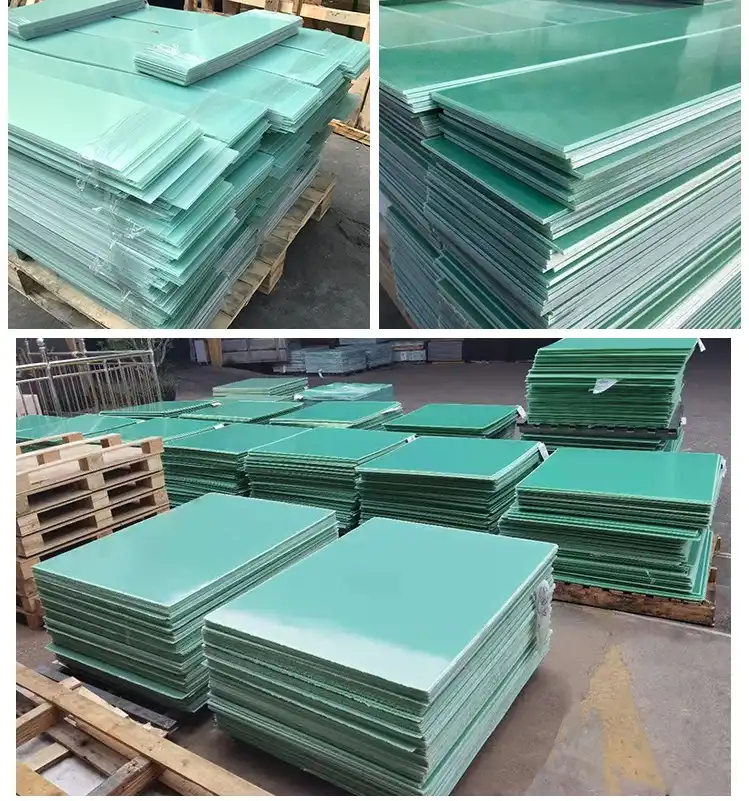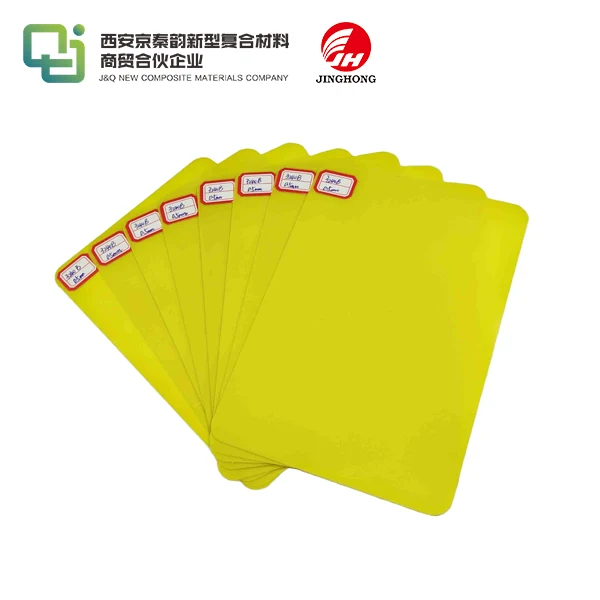Is FR4 waterproof?
2024-08-14 16:55:11
When it comes to electronic components and circuit boards, one material that often comes up in discussions is FR4. This versatile material has become a staple in the electronics industry, but many people wonder about its properties, particularly its resistance to water. In this blog, we'll dive deep into the world of FR4 sheets and answer the burning question: Is FR4 waterproof?
Understanding FR4: Composition and Properties
FR4, an acronym for Flame Retardant 4, is a highly regarded composite material extensively used in the electronics industry. It is composed of woven fiberglass cloth soaked in a flame-retardant epoxy resin binder. This combination endows FR4 with its notable strength, durability, and heat resistance, making it a popular choice for various industrial applications.
The fiberglass cloth provides structural integrity and enhances mechanical strength, while the epoxy resin ensures thermal stability and electrical insulation. This blend creates a material that excels in withstanding high temperatures and harsh environments, maintaining its properties even under stress. FR4's low thermal expansion and high dimensional stability make it ideal for use in printed circuit boards (PCBs), where precise electrical performance and mechanical support are crucial. Additionally, its excellent electrical insulating properties help prevent short circuits and component failures.
The Water Resistance of FR4
To clarify, FR4 is not entirely waterproof. However, it does exhibit significant water-resistant characteristics that make it suitable for a range of applications where moisture exposure could be an issue. The material's ability to resist water is often measured by its water absorption rate, which provides insight into how much moisture it can take in when submerged in water.
Typically, FR4 sheet has a low water absorption rate, usually less than 0.1% when immersed in water for 24 hours. This low absorption rate indicates that FR4 can absorb only minimal quantities of water, and it does so at a very slow pace. This property is advantageous in protecting electronic components and other devices from moisture-related damage in various scenarios. For example, in electronic circuit boards, this low water absorption helps maintain the integrity of electrical connections and prevent failures caused by moisture ingress.
Despite its water-resistant properties, it's important to note that FR4 is not impervious to water over extended periods or in high-humidity environments. Prolonged exposure to moisture or high humidity can eventually lead to increased moisture absorption, which can impact the material's performance. This gradual absorption can potentially alter FR4's electrical and mechanical properties over time, such as its dielectric strength, mechanical strength, and dimensional stability.
In applications where FR4 is exposed to significant moisture or where long-term water resistance is crucial, additional protective measures might be necessary. For instance, conformal coatings or encapsulation can be applied to shield the FR4 material from direct contact with moisture. Conformal coatings are thin, protective layers that cover the surface of electronic components to protect them from environmental factors, including water. Encapsulation, on the other hand, involves enclosing the entire component or assembly in a protective resin to create a barrier against moisture and other contaminants.

What Are the Best Practices for FR4 Sheets?
To maximize the performance and longevity of FR4 sheets in moisture-prone environments, consider the following best practices:
Use Conformal Coatings or Encapsulants
Applying conformal coatings or encapsulants to FR4 sheets is one of the most effective ways to protect against moisture and other environmental factors.
- Conformal Coatings: These are thin layers of protective material applied to the surface of FR4 sheets. They provide a barrier that shields the FR4 from moisture, chemicals, and mechanical damage. Common types of conformal coatings include acrylics, silicones, urethanes, and epoxies. Each type offers varying levels of protection, so selecting the appropriate coating depends on the specific environmental conditions and performance requirements.
- Encapsulants: Encapsulation involves enclosing the FR4 sheets or components in a protective resin or plastic. This method provides a more robust barrier against moisture, especially in applications where the FR4 is exposed to severe conditions. Encapsulation is particularly useful for electronic assemblies and components that require extra protection.
Implement Proper Ventilation and Moisture Control
Maintaining a controlled environment is crucial for preserving the performance of FR4 sheets.
- Ventilation: Ensure that the operating environment is well-ventilated to prevent the accumulation of moisture and heat. Proper airflow helps to dissipate any trapped humidity and maintains a stable environment for FR4 sheets, particularly in enclosed spaces or cabinets.
- Moisture Control: Use dehumidifiers and humidity control systems to regulate the moisture levels in the environment. Keeping the relative humidity within recommended limits reduces the risk of moisture absorption by FR4 sheets and helps prevent potential issues related to material degradation.
Regular Inspection and Maintenance
Routine inspections and maintenance are essential to identify and address any signs of moisture-related issues before they escalate.
- Visual Inspections: Regularly check FR4 sheets for any visible signs of damage, such as warping, discoloration, or delamination. Early detection of these issues can prevent further deterioration and ensure timely intervention.
- Functional Testing: For FR4 used in electronic applications, conduct periodic functional tests to verify that electrical properties remain within acceptable ranges. Testing helps to ensure that the FR4 continues to perform its intended functions without interference from moisture-related issues.
Choose Appropriate Thickness and Grade
Selecting the right thickness and grade of FR4 is crucial for matching the material to the specific application requirements.
- Thickness: The thickness of FR4 sheets affects their mechanical strength, thermal conductivity, and overall performance. For applications subject to mechanical stress or high temperatures, choose a thickness that provides adequate support and durability.
- Grade: FR4 comes in various grades, each with specific properties such as different flame retardancy levels, thermal stability, and dielectric strength. Choose a grade that aligns with the operational requirements and environmental conditions of your application.
Conclusion
In conclusion, while FR4 sheets are not completely waterproof, they do offer significant water-resistant properties that make them suitable for a wide range of applications, including those with moderate moisture exposure. Their low water absorption rate, combined with excellent electrical and mechanical properties, continues to make FR4 a popular choice in the electronics industry and beyond. Understanding the characteristics of FR4 sheets is crucial for anyone working in electronics, manufacturing, or related fields. By knowing its strengths and limitations, you can make informed decisions about using FR4 in your projects and ensure optimal performance and longevity of your electronic components and devices.
If you're looking to learn more about FR4 sheets or need high-quality insulating materials for your projects, don't hesitate to reach out to us at info@jhd-material.com. We're here to help you find the perfect solution for your specific needs.
References
1. "Understanding FR4: The Basics of FR4 Epoxy Laminates". Advanced Circuits.
2. "FR4 Epoxy Material Properties and Characteristics". PCBWay.
3. "Water Absorption in FR4 Materials". ScienceDirect.
4. "Protecting FR4 PCBs from Moisture and Environmental Factors". Electrocomponents.
5. "The Role of FR4 in Electronics: Performance and Durability". IEEE Xplore.



 拷贝.webp)



